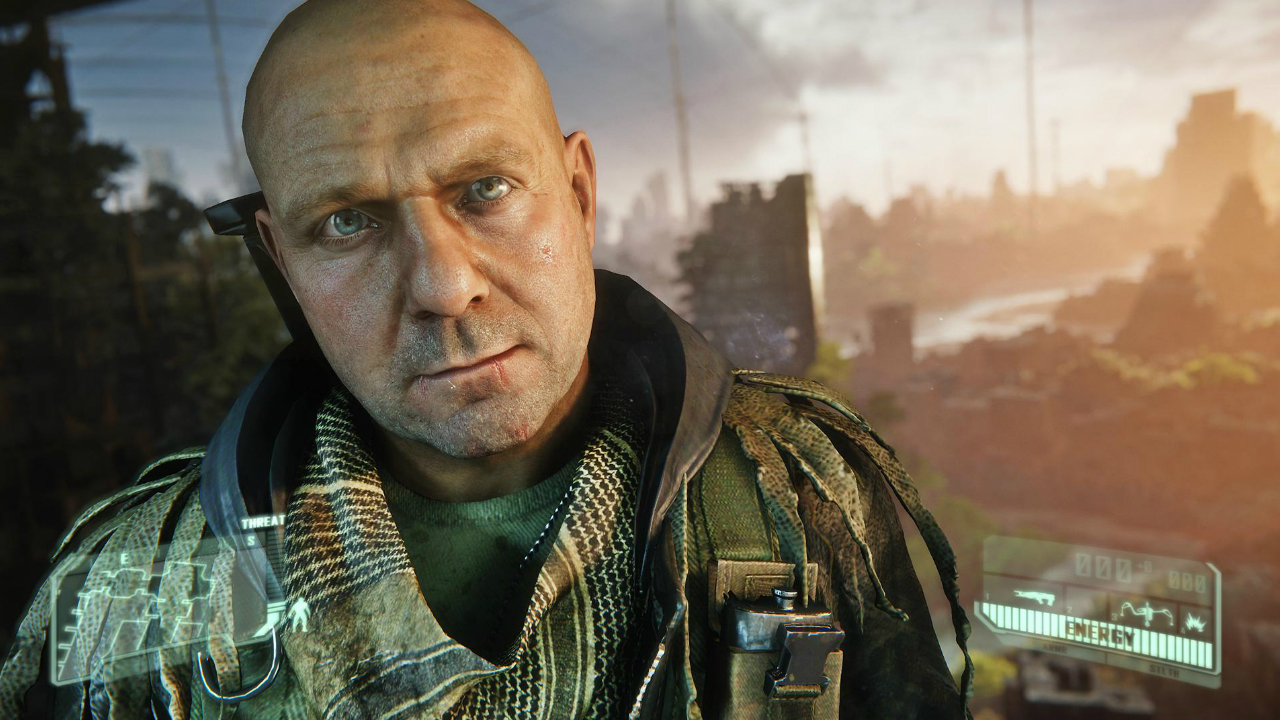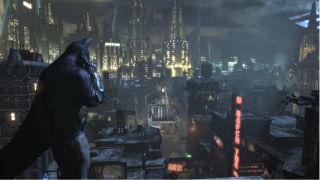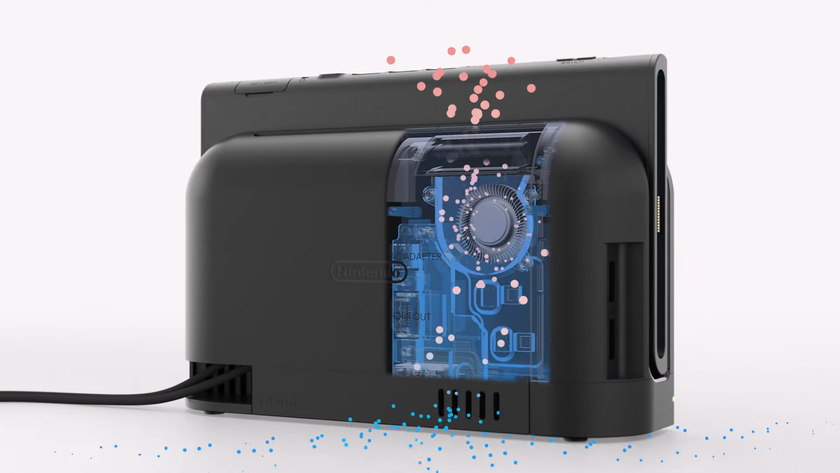Why should gamers care about 4K and HDR?

4K and HDR have arrived. In a move sure to please the majority of gamers (as long as you’ve got a 4K TV), the PS4 Pro and Xbox One Scorpio will run upcoming 4K releases like Horizon: Zero Dawn, along with games already with us such as Uncharted 4 and Rise of the Tomb Raider. But does 4K actually matter to gaming?
First off, you should probably know what 4K is before I start hypothesising about it. 4K is being praised as the next big thing because it’s quadruple the resolution of 1080p, which most of us have right now. 4K’s resolution is 3840 by 2160 pixels, which is equal to four screens of 1080p (which is 1920 by 1080). That means a ton more detail for us to gawp at, whether it’s in the form of individual leaves on the forest floor instead of murky green sheets with a vague leaf texture, or pores on an NPC’s face. 4K simply means that you’ll be seeing a lot more detail in the games you play. Images will look crisper and have cleaner edges, so you’ll be able to see defined wrinkles, scratched metal, and separate strands of hair. The extra pixels end up making a huge difference to the overall look of the image or game by bringing tiny details into focus. The image below nicely demonstrates exactly how much definition it adds.

High-Dynamic-Range imaging - or HDR for short - is a new lighting technique which means brighter colours, more contrast, and more detail in dark scenes. When paired with 4K, it will mean games take on a whole new look, as you’ll be able to see the difference between pitch-black and normal darkness which obscures objects slightly instead of making them impossible to see. You don’t have to bump your brightness up each time you enter a new shadowy area, meaning that the transition between outside and inside is a lot smoother. HDR pumps up the potency of 4K, as the new light-rendering technique makes sure no details get lost in the shadows.
Almost everyone likes to play detailed games where you can see every wrinkle, pore, and strand of hair. But I can’t help but ask if 4K is really necessary. When I remember my favourite games like BioShock and Portal 2 it’s not the graphics which stand out for me, but the characters, my surroundings, and, most of all, the story which grabbed me and to this day hasn’t let go of me. Recently I went back to Morrowind and was surprised to see that the little grey figures running around have as many pixels as ladybirds have spots. In my mind there was as much detail to each NPC as there is in Skyrim, and I swear I remembered voices even though in Morrowind all you get is a block of text when you speak to the people wandering around. What it comes down to is that our memories of games are always in HD. We make up for shortcomings in graphics with our imagination - after all, if I could run around as a kid waving a stick which was a massive glinting sword in my eyes, you can bet that in my mind Half-Life with its jerky animation and square curves looked indistinguishable from Half-Life 2. So whilst 4K is undeniably attractive, what could games do to truly take advantage of it?

The obvious first benefit of 4K is the vast increase in the level of immersion. The level of detail brings gaming closer to being indistinguishable from real life, making the whole experience much more convincing. When you pair that level of graphics with playing on a curved 4K screen and positioning your eyeballs within a metre or so, it makes it hard to believe that you’re sitting in your own home instead of traversing through the luscious countryside in The Witcher 3, or swinging from stone monuments in Rise of the Tomb Raider.
Expect artistic licence to run riot with the dawn of 4K. Worlds can now be filled with scenes which hold up under the closest scrutiny: individual leaves piling up beneath autumnal trees, distinct petals on every flower instead of colourful splodges, blades of grass swaying in the wind. Rejoice if you’ve got a passion for walking simulators, or survival games where you can hunt for herbs which look distinct from the grass you’re trampling, because 4K is sure to make a difference.

4K is all about detail, but it doesn’t have to be purely aesthetic. Designers would be wise to embrace the opportunity to delve into much more depth with their game mechanics. The detective genre in particular could corner the niche of 4K-specific gameplay, as attention to the little things is critical when it comes to finding clues and solving mysteries. L.A. Noire saw players investigating crime scenes, and with 4K the amount you could glean from a single coat splattered with blood would be drastically increased - a single hair left on the collar, a speck of dirt on the sleeve - details which would otherwise be reduced to blurs without all of those extra pixels.
Sign up to the 12DOVE Newsletter
Weekly digests, tales from the communities you love, and more
The same goes for questioning suspects. At easier levels you can tell when someone’s lying because they’re visibly panicking, but with 4K higher levels would really be tricky - a tell in the form of a twitching eyelid, a barely noticeable increase in pulse which you can see throbbing in their neck, and maybe when the suspect reaches up to brush a hair behind their ear you notice some dirt underneath their fingernail which happens to be the same colour as the dirt found on the murder victim… There’s also certainly a lot more scope for adding extra details to characters’ appearances which end up making them look even more convincing, which I expect would have an impact on the attachment you have to NPCs. Seeing tears running down an NPC’s face might not have made you care too much when the tears only shone dully, but seeing them leave a glistening streak on the cheeks could tip you over into empathising just that little bit more.

However, the massive amount of detail which 4K offers means that you’d have to be selective about what you pay attention to, especially if you’re hunting for clues. The object investigation mechanic in Resident Evil 7 means that seemingly innocuous metal boxes have tiny clues which you reveal by turning the object over in your hands, but with 4K a zoom ability would also come in handy. The problem is, when you have the option of investigating every square inch of an object, you’d have to use your better judgement to determine which scrawl is nonsense and which one reveals a critical nugget of information.
FPS games could also take advantage of this forensic level of detail. As well as making blood splatter disturbingly realistic instead of producing identical red puddles with fuzzy edges, imagine the possibilities offered by scoping in 4K. You could choose precisely where you want the bullet to collide with the head, maybe even controlling the bullet as it flies through the air and watching as it buries itself deep into the hair sitting atop of your foe’s skull. For those sneaky players reading this who gravitate towards sniper rifles and cloaking abilities without a second thought, an additional benefit of 4K would be its use for surveillance. You could happily track your enemies using a pair of high-tech binoculars, flicking in and out of them without sacrificing any detail in the world around you or having to endure a loading screen as the game renders the zoomed-in perspective.
So there’s what I think games could do to squeeze every drop of potential out of 4K. Extra detail is almost always a good thing, but 4K and HDR have a lot more to offer than just making things look prettier. Whether it’s giving developers more artistic freedom, revolutionising the mystery genre, or simply making super-scoping a viable option, all those extra pixels are sure to offer prospects for innovative game design. If you’ve got any ideas of your own, mention them in the comments below!
While here at GamesRadar, Zoe was a features writer and video presenter for us. She's since flown the coop and gone on to work at Eurogamer where she's a video producer, and also runs her own Twitch and YouTube channels. She specialises in huge open-world games, true crime, and lore deep-dives.













